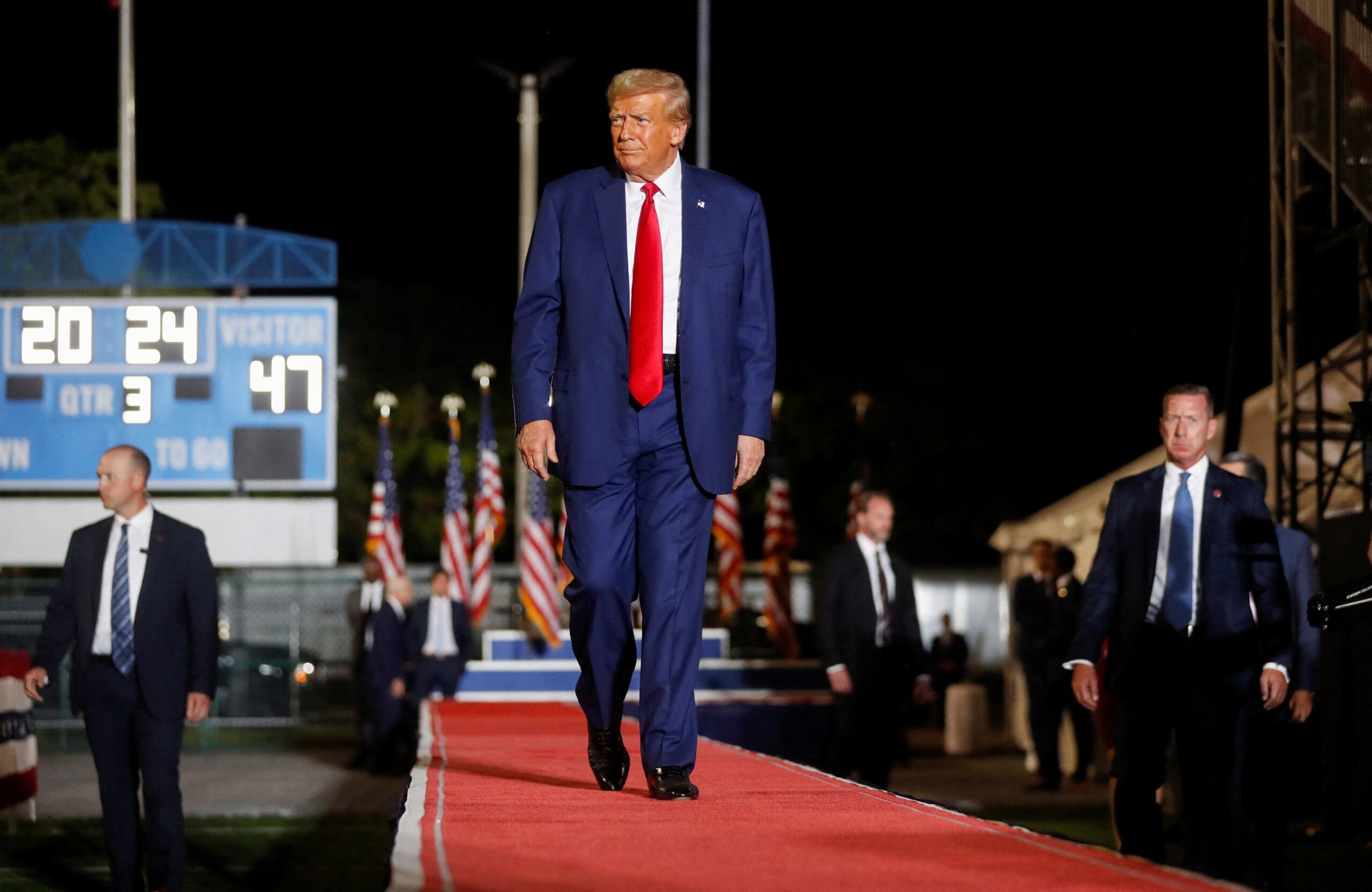President Trump’s Second Term Initiative: As of February 17, 2025, President Donald J. Trump has embarked on his second term with a series of assertive initiatives aimed at reshaping domestic policies and reinforcing U.S. interests globally. These actions reflect his administration’s commitment to fulfilling campaign promises and addressing pressing national concerns.
1. Immigration and Border Security
A cornerstone of President Trump’s agenda is the intensification of immigration enforcement. The administration has initiated mass deportations targeting undocumented immigrants and has proposed significant changes to asylum policies. These measures aim to deter illegal immigration and enhance national security. Additionally, there is a renewed focus on completing the border wall along the U.S.-Mexico border, with increased funding allocated to this project. Collaborations with Mexican authorities are also underway to curb cross-border trafficking and crime.
In the economic realm, President Trump has introduced tax reforms designed to stimulate growth. These reforms include further reductions in corporate tax rates to encourage domestic investment and job creation. The administration is also pursuing aggressive trade policies, implementing tariffs to protect American industries and reduce trade deficits. Negotiations are ongoing to secure more favorable trade deals, with a focus on prioritizing American workers and businesses.
3. Diversity, Equity, and Inclusion (DEI) Policies
Early in his second term, President Trump issued executive orders aimed at dismantling DEI programs within federal agencies and among federal contractors. These orders revoke previous mandates that promoted diversity training and initiatives, asserting that such programs may foster division or constitute reverse discrimination. The administration emphasizes a merit-based approach, seeking to eliminate what it perceives as preferential treatment based on race, gender, or other identities.
4. Federal Workforce Restructuring
A significant aspect of the administration’s strategy involves restructuring the federal workforce. This includes the dismissal of numerous federal employees, particularly within agencies like the Federal Aviation Administration (FAA) and nuclear programs. While the stated goal is to enhance efficiency and reduce bureaucracy, these actions have raised concerns about potential impacts on public safety and operational effectiveness. For instance, recent layoffs in the FAA followed a fatal plane crash, leading to debates about the adequacy of staffing levels in critical sectors.
5. Foreign Policy and National Security
On the international stage, President Trump continues to advocate for an “America First” foreign policy. This approach includes reassessing U.S. involvement in international alliances and agreements to ensure they align with national interests. The administration is also engaging in high-level discussions with global powers, such as Russia, to address ongoing conflicts and explore potential collaborations. However, these engagements have sparked debate, especially when key allies or stakeholders are excluded from negotiations.
6. Regulatory Reforms
The Trump administration is actively pursuing deregulation across various sectors, aiming to reduce what it considers burdensome regulations that hinder economic growth. This includes rolling back environmental protections and easing restrictions on industries like energy and manufacturing. The objective is to foster a more business-friendly environment, though critics argue that such moves may compromise environmental and public health standards.
7. Social Policies
In the social policy arena, President Trump has taken steps to reverse previous reforms, particularly those implemented during the Biden administration. This includes efforts to roll back gun control measures, with a focus on protecting Second Amendment rights. The administration is also reviewing policies related to healthcare and education, aiming to introduce market-driven solutions and increase state-level autonomy in these areas.
8. Technology and Innovation
Recognizing the strategic importance of technology, the administration is investing in initiatives to bolster American leadership in areas like artificial intelligence, cybersecurity, and space exploration. Collaborations between the government and private sector are being encouraged to drive innovation and maintain a competitive edge on the global stage. However, concerns have been raised regarding privacy and ethical implications, especially with proposals to access sensitive data for efficiency improvements.
9. Judicial Appointments
President Trump is continuing his efforts to reshape the judiciary by appointing judges who align with his administration’s conservative values. These lifetime appointments are expected to influence the interpretation of laws on issues ranging from reproductive rights to federal regulations for decades to come. The administration prioritizes candidates who demonstrate a commitment to originalism and textualism in their judicial philosophy.
10. Environmental Policies
Environmental policy under President Trump’s second term focuses on balancing economic interests with conservation efforts. This includes promoting energy independence through the expansion of fossil fuel production while also investing in renewable energy sources. The administration argues that a diversified energy strategy will ensure national security and economic stability, though environmental advocates express concerns about the potential long-term impacts of increased fossil fuel use.
In summary, President Trump’s second term is characterized by a series of bold initiatives aimed at redefining the federal government’s role, both domestically and internationally. These policies reflect a commitment to conservative principles, economic nationalism, and a reevaluation of traditional alliances and regulatory frameworks. As these initiatives unfold, they continue to generate robust debate and will significantly shape the nation’s trajectory in the coming years.

